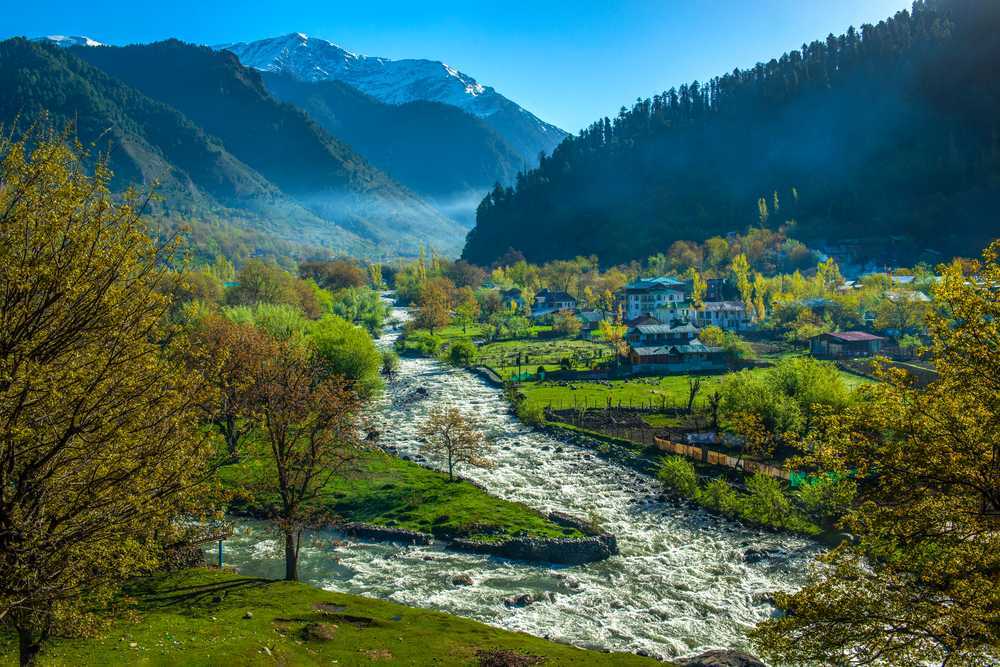
The Incident of Pahalgam: Tragedy at the Gateway to Amarnath
Pahalgam, a picturesque town nestled in the Anantnag district of Jammu and Kashmir, India, has long been a beacon for both tourists and pilgrims. Known for its lush green meadows, snow-capped peaks, and the Lidder River, Pahalgam also holds religious significance as the starting point for the annual Amarnath Yatra, one of the holiest pilgrimages in Hinduism. However, on July 8, 2022, this serene landscape was shattered by a natural calamity—a sudden cloudburst near the Amarnath cave shrine—that claimed several lives and left a lasting scar on the memories of thousands.
The 2022 Cloudburst: What Happened?
The Amarnath Yatra had resumed in 2022 after a two-year hiatus due to the COVID-19 pandemic. Pilgrims from across India flocked to the region with renewed devotion and hope. However, around 5:30 PM on July 8, a cloudburst occurred near the holy cave, triggering massive flash floods and landslides. The torrent of water swept through the campsites and temporary shelters set up for the pilgrims, washing away tents and trapping people under debris.
Official reports confirmed that at least 16 people were killed, and dozens were reported missing. The swift response from the Indian Army, National Disaster Response Force (NDRF), Indo-Tibetan Border Police (ITBP), and Jammu and Kashmir Police was instrumental in rescuing over 15,000 stranded pilgrims. Despite the challenging terrain and inclement weather, the rescue teams worked tirelessly to bring the situation under control.
The Geography and Climate Challenges
Pahalgam and the Amarnath cave lie in a region characterized by unpredictable weather and rugged topography. The high-altitude terrain makes it prone to natural disasters like landslides, avalanches, and flash floods. A cloudburst, typically defined as a sudden, very intense rainfall over a small area, often leads to devastating consequences in such environments due to the lack of drainage and the fragile ecosystem.
In the case of the 2022 incident, meteorological data indicated that the region received over 30 mm of rain in less than an hour, an extreme amount in such a short time. Combined with loose soil and steep slopes, this rainfall created the perfect conditions for a flash flood.
Response and Rescue Efforts
The immediate aftermath of the incident saw a coordinated response from multiple agencies. The Indian Army set up makeshift hospitals and provided medical aid on the spot. Helicopters were deployed to airlift the critically injured and transport supplies. Thermal imaging devices and rescue dogs were used to search for survivors buried under the rubble.
Despite the tragic loss of life, many praised the efficiency of the rescue operations, which helped prevent an even greater catastrophe. Government officials, including Prime Minister Narendra Modi, expressed condolences and announced financial compensation for the victims’ families.
Lessons and Implications
The Pahalgam incident raises pressing questions about disaster preparedness in ecologically sensitive areas. While the pilgrimage is an integral part of the region’s culture and economy, it also poses a logistical and environmental challenge. Thousands of pilgrims moving through narrow mountain trails and camping in makeshift accommodations increase the risk during adverse weather events.
There is a growing call for implementing stricter safety protocols, including real-time weather monitoring, limiting the number of pilgrims, and ensuring sturdier shelter infrastructure. Additionally, climate change has been cited as a factor contributing to the increased frequency and intensity of such extreme weather events. The Himalayas, including the Kashmir valley, are warming at an accelerated pace, making cloudbursts and glacial lake outbursts more common.
Cultural and Emotional Impact
Beyond the physical destruction, the incident deeply affected the collective psyche of the people—both the locals of Pahalgam and the pilgrims. The Amarnath Yatra is more than a journey; it is a spiritual experience that draws millions seeking divine blessings. The tragedy transformed a place of devotion into a site of mourning. Yet, it also highlighted the resilience of the human spirit, as survivors shared stories of courage, kindness, and miraculous escapes.
Conclusion
The incident at Pahalgam in 2022 serves as a sobering reminder of the vulnerability of human life in the face of nature’s fury. It underscores the need for a balanced approach to religious tourism that respects both spiritual traditions and environmental realities. As the region continues to heal, it is imperative for authorities, pilgrims, and local communities to work together to ensure that faith and safety go hand in hand. Only then can the journey to the Amarnath cave remain a source of peace, not peril.
for more such info go to https://digiadvantage.in/
Follow https://digitricks.in/ for more

